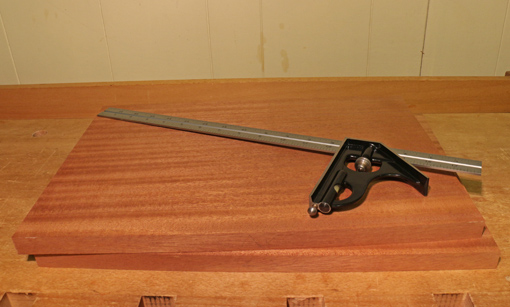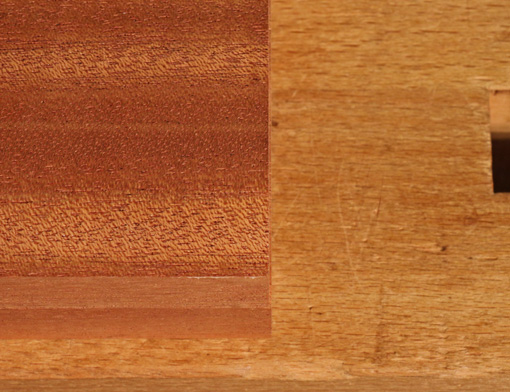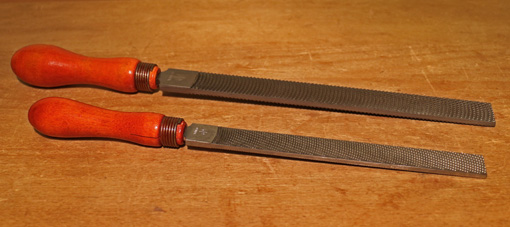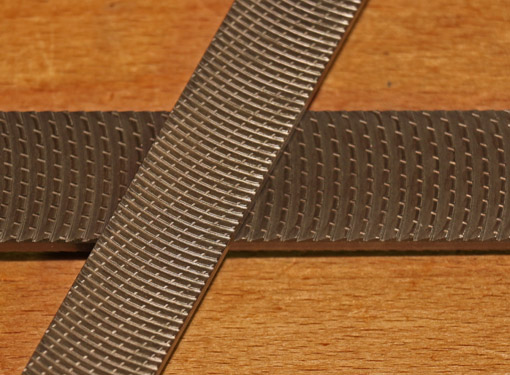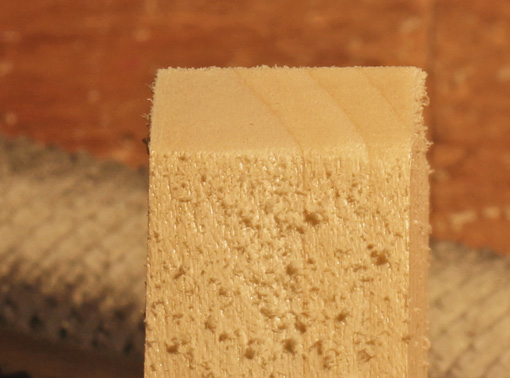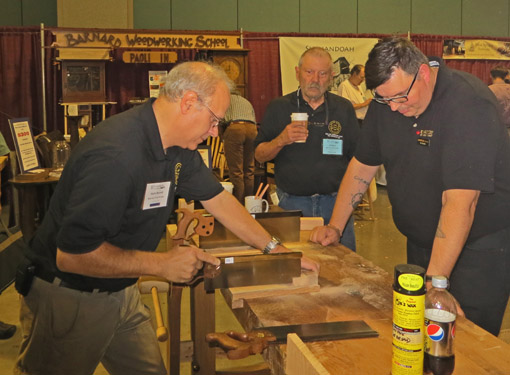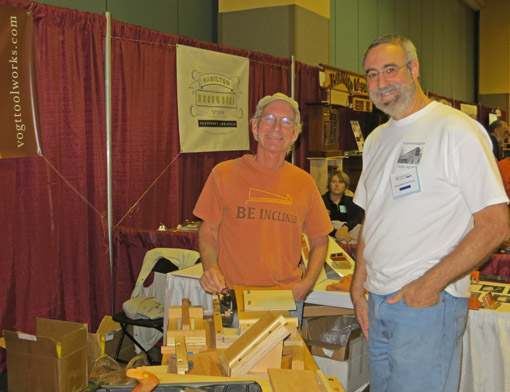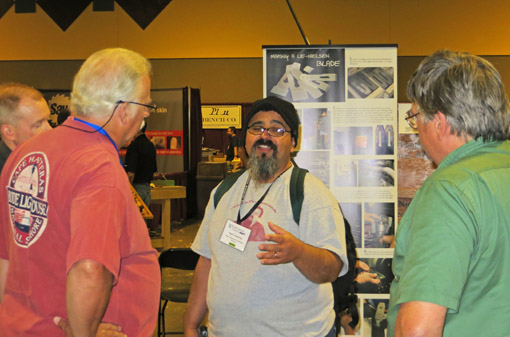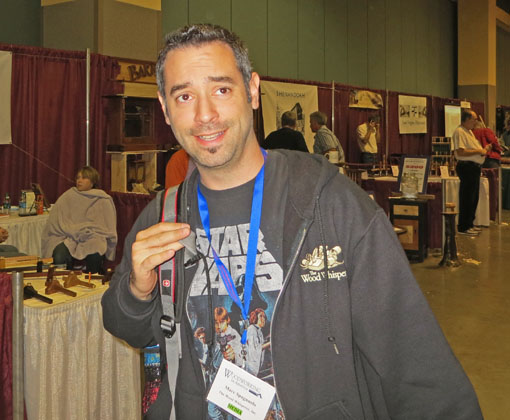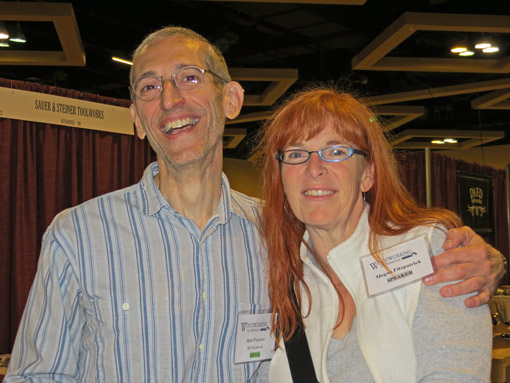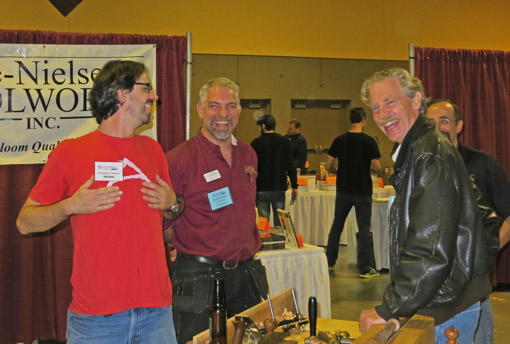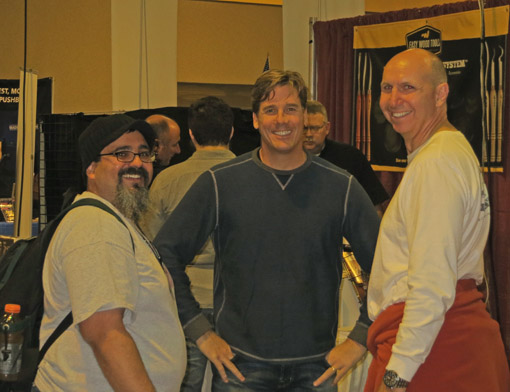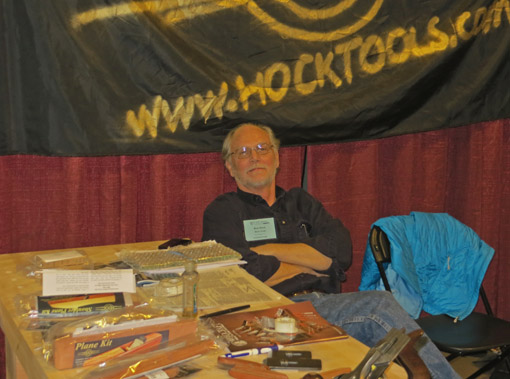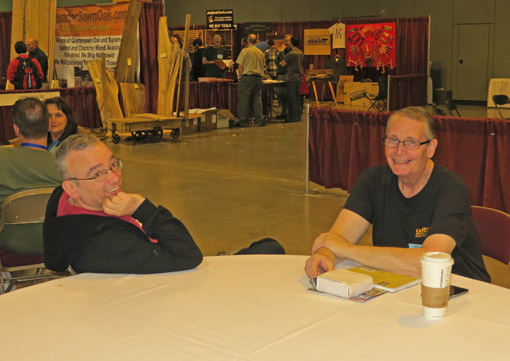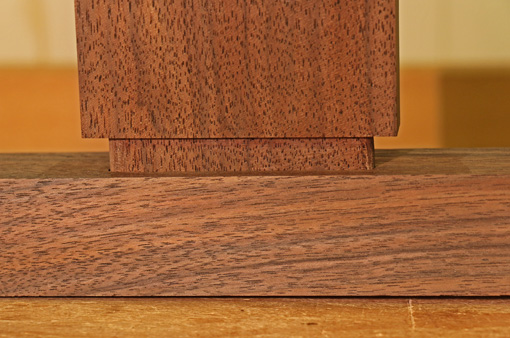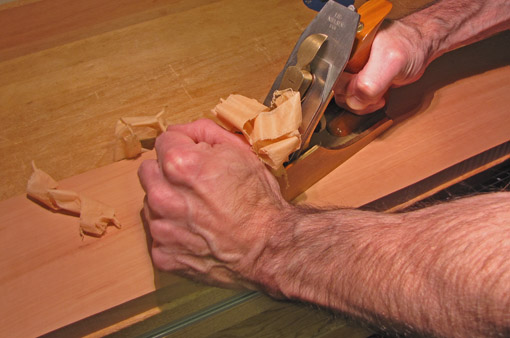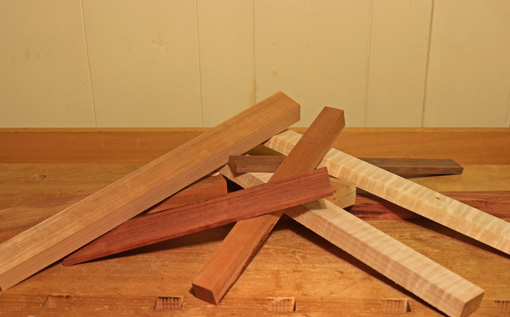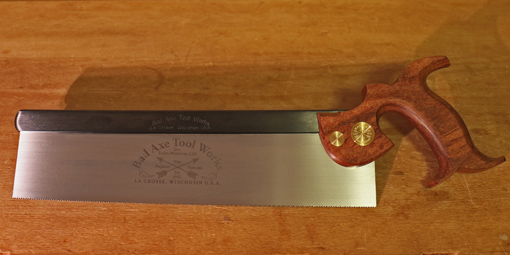
Or a block plane? Answer: It’s out on the bench almost every time I’m working there. I don’t always know ahead of time what I’m going to use it for, but I know I am going to use it for something, and I know it will get the job done.
Really, this Bad Axe Hybrid Dovetail/Small Tenon saw is the most versatile backsaw I have ever used. The amazing aspect is not only how many tasks it can do, but how well it does them. It cuts wonderfully smoothly. For example, it is now my favorite saw for tenon shoulder cuts – a crucial crosscut, but it also does a nice job for small tenon cheeks – a rip cut.
Here are the specs of my saw, which I have been using for about three months: 12″ long, 0.020″ saw plate, 14 ppi, “hybrid” filing, depth under the back 2 1/2″ at the heel, tapering to 2 3/8″ at the toe. The hybrid filing is about 10° (negative) rake and 12.5° fleam. Remember ladies and gentlemen, BATW makes exquisite handles in a variety of woods in five sizes to fit your hand. As I have discussed in other posts, I also very much like the hang of BA saws.
This is the saw I recommend if you are working with small to moderate size projects and want to own only one backsaw that must be as versatile as possible but that will never be displaced by more specialized backsaws as you expand your tool kit. If you want to further specialize, Mark Harrell has a great offer to facilitate this (see the ninth paragraph down in the linked page).
There is a “soul” in these Bad Axe saws that I feel is very special. These tools improve my work.
There are excellent saw maintenance tutorials and learning materials on the BATW site. Mark also offers hands-on saw sharpening and maintenance seminars at BATW HQ that will doubtlessly take your skills to the way beyond.

